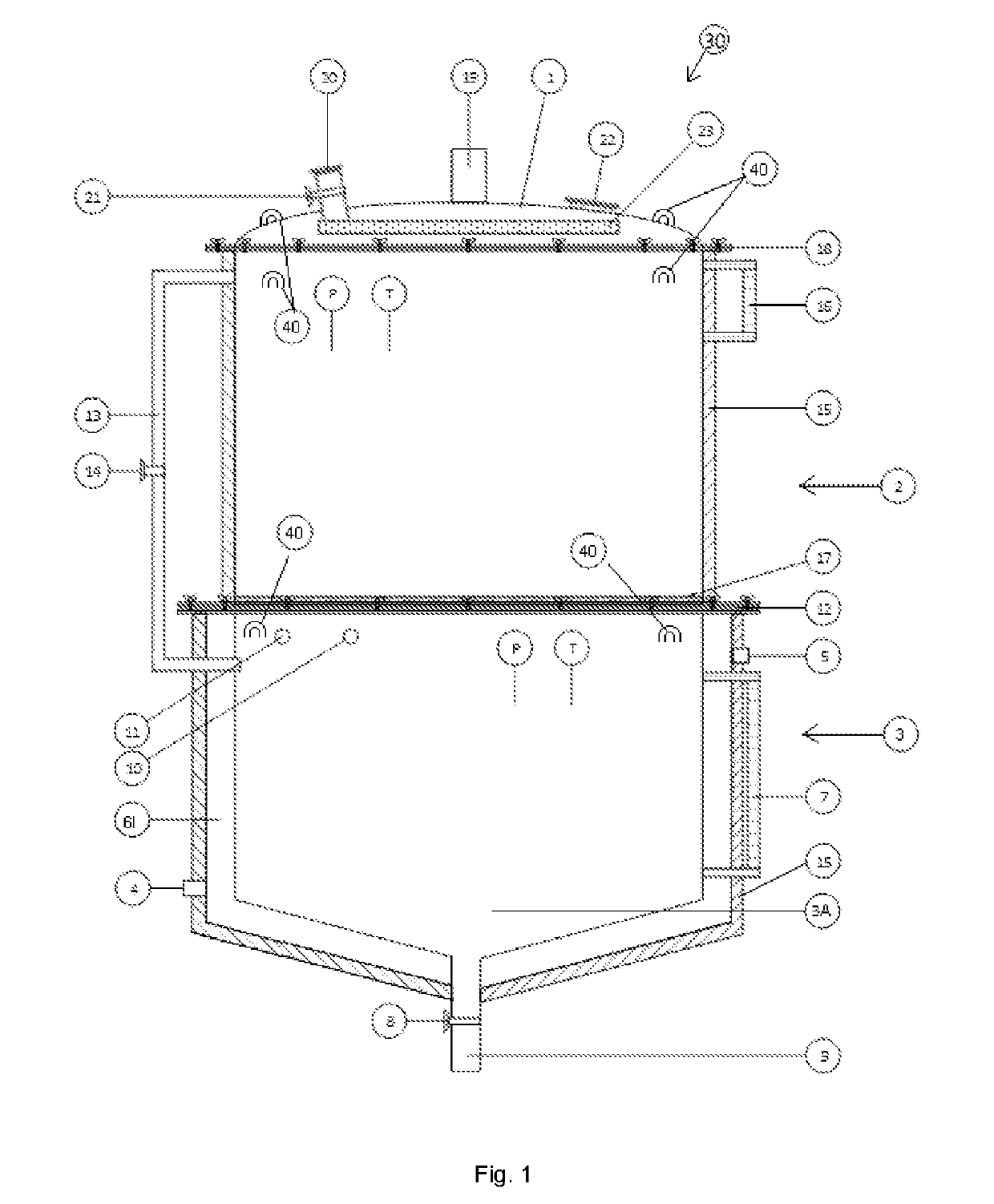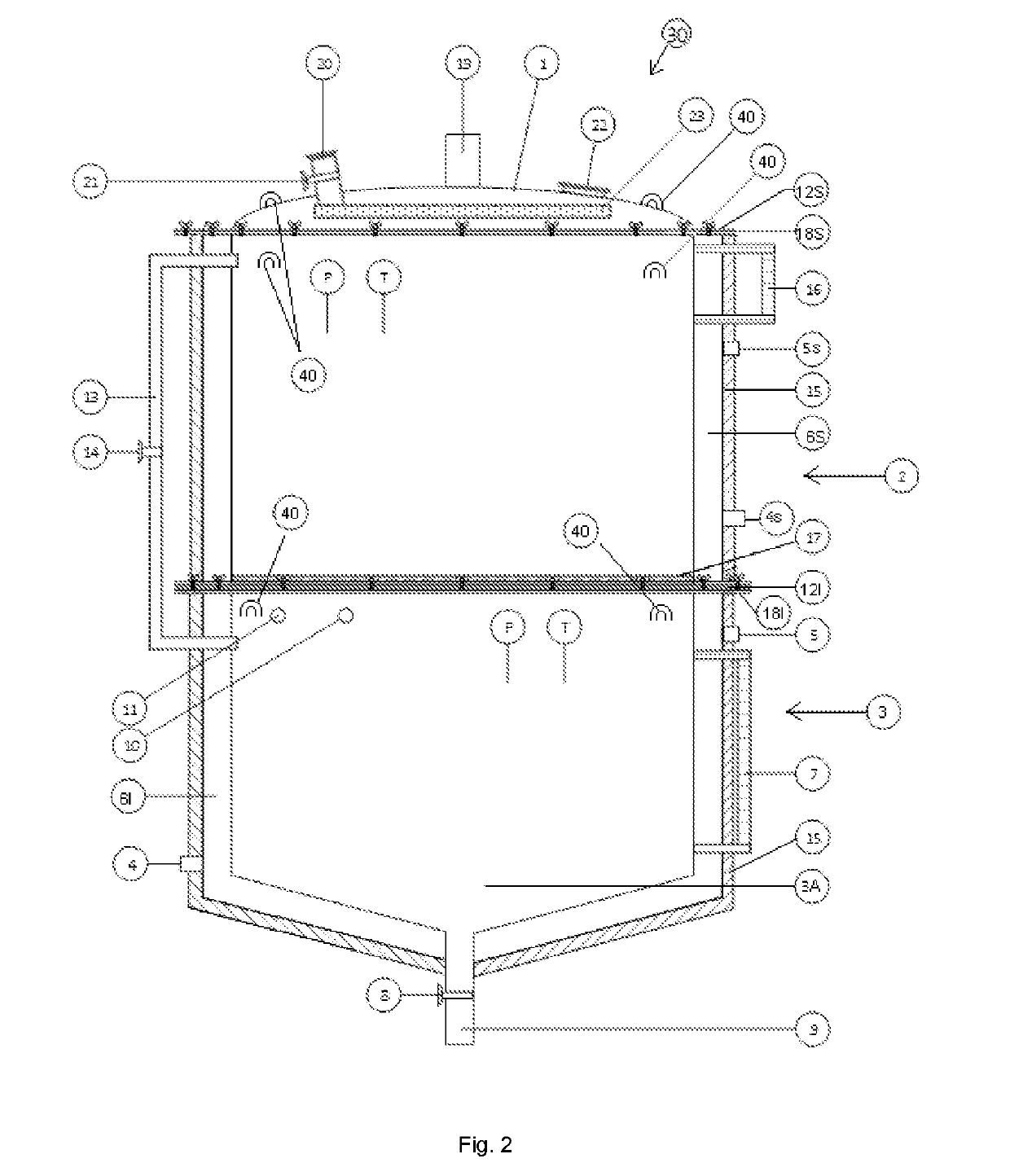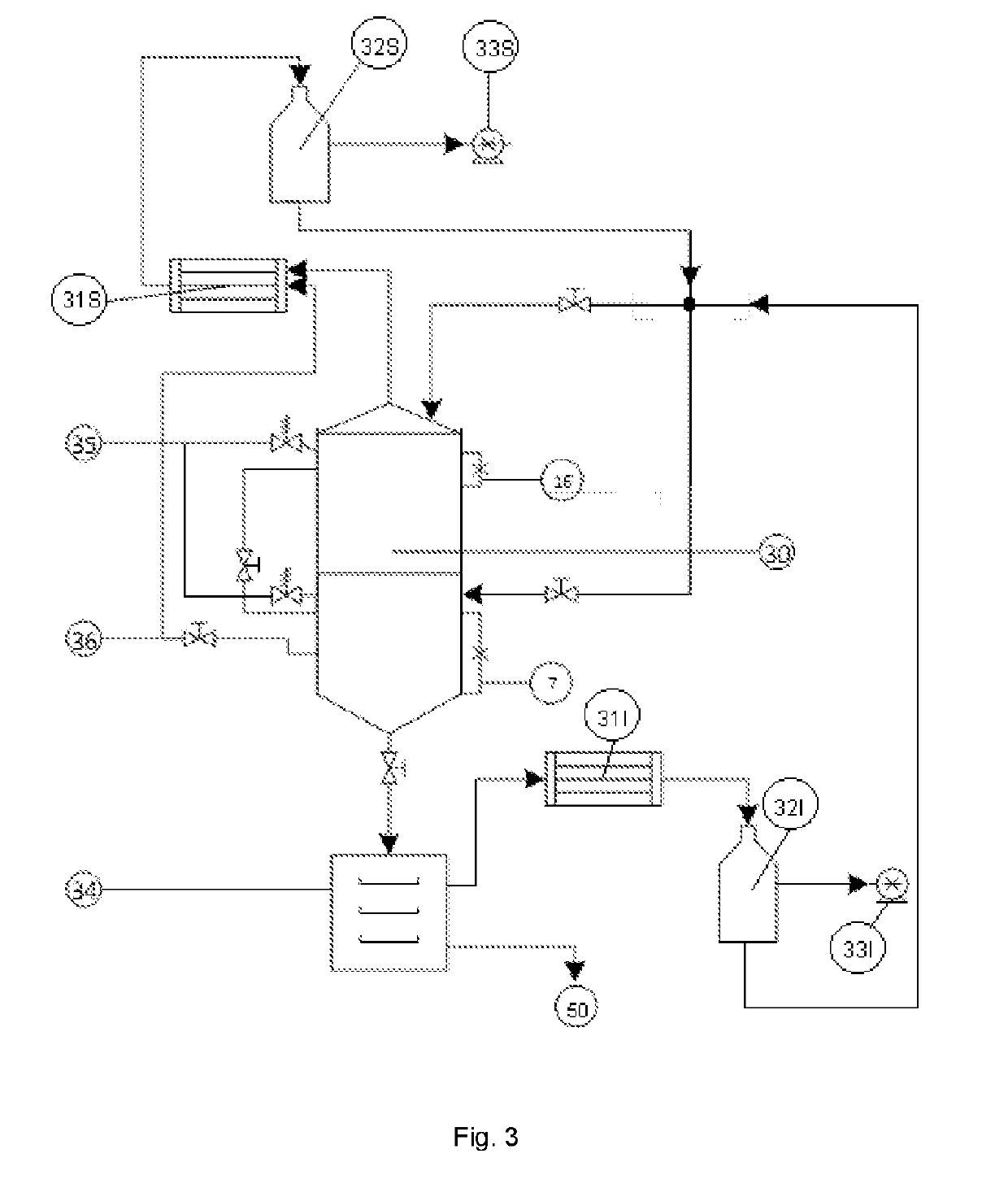Solvent extraction equipment, which allows efficient use of energy, through the reuse of the solvent(s).
a solvent and energy-saving technology, applied in the field of equipment, system and method of extraction, can solve the problems of high equipment cost, impractical implementation and use of said compounds, and difficult recovery of compounds, so as to facilitate extraction by increasing solubility, more homogeneous and efficient extraction, and the effect of increasing the kinetic energy
- Summary
- Abstract
- Description
- Claims
- Application Information
AI Technical Summary
Benefits of technology
Problems solved by technology
Method used
Image
Examples
application examples
Example 1
[0084]In a first instance, this type of extractor was elaborated on a laboratory scale made of glass with fiberglass of different pore sizes and capacities that allowed to hold the solid source of extraction in a volume of 50, 100, 250 and 1.500 ml (4 different systems). This extractor, allows its connection to accumulator and condensers to complete the system. The actual amount of sample to be treated is related to the density of the solid sample (source to be extracted), which will also depend on the size of the particles contained in said material.
[0085]This equipment has been successfully tested with the use of solvents such as water, acetone, ethanol, isopropyl alcohol, petroleum ether, hexane and cyclohexane. Under diverse solid sources of extraction as: leaves, husks, fruits and flours of animal origin with protein content. Additionally, tests have been carried out that allow successive extractions with solvents such as water and alcohol and vice versa, which gives s...
example 2
[0091]Once the feasibility of extraction with laboratory scale systems was established, an extraction equipment of stainless steel was made, allowing treatment of about 7 liters of solvent and 7 liters of solid extraction source (note that the amount of matter is related to its density and the amount of material necessary to fill the container volume). This equipment allowed the addition of implements such as level indicators, hose connections, valves and control systems (temperature and pressure) that facilitate the handling and control of extraction on a larger scale, as well as allowing the use of vacuum in said system. This prototype, that allowed to add new implements to the system, was tested by using solvents such as water, acetone and ethanol on matrices such as plant leaves and crustacean flours, obtaining products with a high content of polyphenols, antioxidants, pigments and essential fatty acids. This equipment allowed us to make an approximation to the behavior that the...
example 3
[0093]Once the necessary modifications were established at the prototype scale, a pilot-scale stainless steel equipment was built. Said equipment has a capacity of 250 liters for both the solid extraction source container (2) and the solvent / extract container (3). This equipment was provided with heating and cooling sleeves, manometers, thermocouples, hoses with quick connections, level indicators, valves and relief valve (overpressure), non-drip device, solvent and condensate diffuser, in addition to the necessary connections to incorporate condensation, pumping and vacuum systems.
[0094]One of the most important aspects corresponds to the energy requirement that allows the evaporation of the solvent to be used. This will vary with the solvent to be used, making necessary a higher energy consumption at a higher boiling temperature of the solvent and the interactions that may occur with the extracted compounds. The working temperature can be reduced by using vacuum, so that enabling ...
PUM
| Property | Measurement | Unit |
|---|---|---|
| pore size | aaaaa | aaaaa |
| density | aaaaa | aaaaa |
| temperatures | aaaaa | aaaaa |
Abstract
Description
Claims
Application Information
 Login to View More
Login to View More - R&D
- Intellectual Property
- Life Sciences
- Materials
- Tech Scout
- Unparalleled Data Quality
- Higher Quality Content
- 60% Fewer Hallucinations
Browse by: Latest US Patents, China's latest patents, Technical Efficacy Thesaurus, Application Domain, Technology Topic, Popular Technical Reports.
© 2025 PatSnap. All rights reserved.Legal|Privacy policy|Modern Slavery Act Transparency Statement|Sitemap|About US| Contact US: help@patsnap.com



